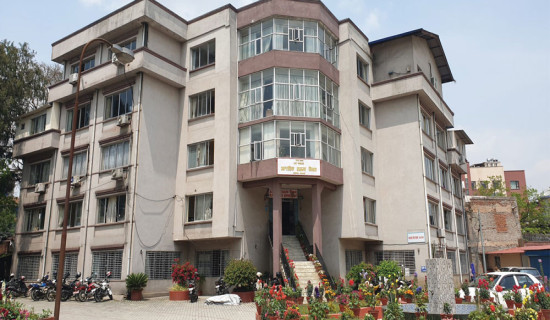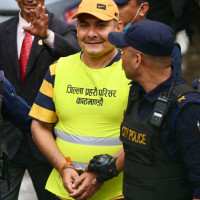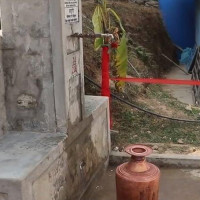- Tuesday, 18 November 2025
Exploring Bhaktapur Everyday
Such is the tragedy of Kathmandu Valley where a great portion of what its people built over two millennia has been lost in the past one hundred years, and more is being lost every single day. But such is the beauty of Kathmandu Valley that much remains.
One need only take a walk around the Durbar Squares of Kathmandu, Lalitpur or Bhaktapur to get a glimpse into the majestic world our ancestors built for them. Every brick on every wall of every structure displays a level of artisanry and environmental awareness that would put even modern artists and builders to shame.
Mr. Admin truly comprehended this when he started exploring his hometown of Bhaktapur in April last year. He had never not understood the glory of the city he inhabited but these explorations allowed him to notice the minute carvings, see the idols within idols, visit the small courtyards hiding grand histories and walk the alleys quietly cradling tales as old as time.
And thus, was born the page ‘365 Days of Exploring Bhaktapur.’ Present on Facebook and Instagram, the page presents a new heritage of – you guessed it – Bhaktapur (nearly) every day. The page initially only posted photos of the monuments and monument parts it discovered but Mr. Admin soon realised that it was not enough to adequately explain the stories they held. So, he expanded into reels and now videos.
As of the time of writing, Mr. Admin, who asked to remain anonymous to keep the spotlight on the heritage rather than himself, had completed 268 of his 365 days and had presented an equal number of artefacts and monuments.
But what drove Mr. Admin to start his exploration in the first place? And to share what he found this way? As a 24-year-old student of bachelor’s in social work, surely, he had other more lucrative options to pursue.
“Well …,” his pause gave away his uncertainty. “I was born here. I grew up around these shrines and temples. This heritage is instilled into my existence.”
“Asking me why I began documenting my city is like asking me why I began breathing. It’s an innate instinct.”
“Did I answer you?” he asked this reporter with an unsure chuckle. Honestly, this reporter does not know if he didn’t.
Over the past year, this innate instinct has enabled us to learn about some truly exciting monuments like a miniature Jagannath Temple hidden beneath a house at Tahachhen, the Mako Ganesh shrine at Mako Galli that faced west on its own after people turned it east, and the vanishing tradition of Basi Puja that used to be performed to seek rain.
It has also allowed Mr. Admin to learn new things like how the Shakyas who carved the golden gate at Bhaktapur Durbar Square were settled in the locality of Khauma.
However, such knowledge does not come from inattentive strolls. It takes time and effort. Mr. Admin spends hours every day walking around Bhaktapur, entering spaces others do not even think about and studying minute details of temples, Phalchas (rest houses) and structures around him.
He consults numerous books and documents, talks to knowledgeable individuals and reaches out to people on social media. He also quit his job to be able to devote more time to this endeavour.
It is not easy to do this. Sometimes, people are not forthcoming about disclosing what they regard as “secretive” or “exclusive” information. Other times, they suspect his intentions and view him as a possible thief. Mr. Admin has also encountered difficulties when trying to access monuments located inside private properties.
But he takes it all in stride, motivated both by the positive feedback he has received from social media users and the difference he has appeared to make. For instance, he recalled how the local government took action to clean the Narayan Temple at Tibukchhe near Sukul Dhoka after his page pointed out how it had turned into a dumping site.
“This page first started as a means of personal expression. I wanted to roam around my city for a year and share what I saw,” he explained his early objectives. “But it quickly dawned on me that many of the heritage sites have not been documented or archived for future generations.:
“That transformed what would have been a leisurely activity into a social mission,” he shared.
But, given that his page is named ‘365 Days of Exploring Bhaktapur,’ does Mr. Admin plan to stop after his year of exploration is over? “No,” he stated. “The form and format of this campaign may change but it will not end.”
Mr. Admin plans to start a YouTube channel to produce longer and more detailed videos and would also prefer to publish a well-researched book. And while he currently works solo without any external funding or formalised partnerships, he is open to collaboration for his future endeavours.
But one person can only do so much, a fact Mr. Admin acknowledges. “Hopefully, my work encourages scholars, students and people with more expertise than me to document our tangible heritage and pass down our intangible culture and traditions to the new generation.”
“Otherwise, they might die with the few people that know their origins and meanings,” he worried.
All photos provided by 365 Days of Exploring Bhaktapur.
(Mishra writes on culture and history.)

















